|
|
VandaFamily: Orchidaceae.
|
|
|
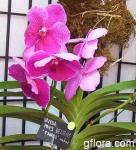 |
Genus of 30-40 species of evergreen, epiphytic or epilytic monopoidal orchids found in exposed sites in shrub forest, from India to S.E. Asia and the Philippines, and south to Australia.
Vandas have thick, simple stems, the tips of which bear 2-ranked, strap-shaped to linear, leathery, semirigid, mid-green leaves, often lobed or toothed at the tips. Aerial roots form on the lower part of the stems. The flowers, borne in axillary, occasionally terminal racemes, are often large and showy. |
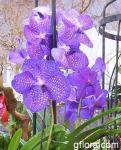 |
| Growing conditions |
Watering and misting |
Propagation |
| Intermediate-growing orchids. Grow in epiphytic orchid potting mix in slatted baskets, in full light with shade from hot sun. Daytime temperature should be 65°F. or higher but can withstand long spells of hot weather and short spells of cold. They will continue in active growth anytime of the year if given warm temperatures and bright light. Night temperatures generally should be 60°F. or higher but not lower than 55°F. |
In summer, water freely, apply fertilizer at every third watering, and mist plant often. Water moderately in winter. |
Remove offsets that arise at the base of the plants, or root cuttings of stem sections, in spring. |
|
Vanda amesiana |
|
|
|
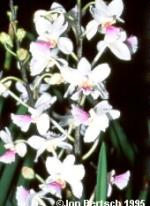 |
|
Vanda coerulea Griff. ex Lindl. (Blue Orchid) |
|
|
Unbranched, epiphytic orchid producing curved, linear leaves to 10 in (25 cm) long. In October-December, bears long, erect to arching racemes of clear blue flowers, 2-4 in (5-10 cm) across. |
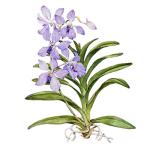 |
|
Vanda kimballiana |
|
|
A brilliant Asian speceis stays compact. This terete-leaf vanda stays under 12" and produces pristine white flowers with a magenta lip. Prefers it warm with bright light. |
 |
|
Vanda parviflora |
|
|
A brilliantly colored Old World species stays compact and produces many nice flowers per spike. Plant is about 8" tall. Grows warm with bright light. |
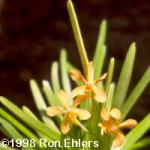 |
|
Vanda teres Lindl. |
|
|
Flowers in October. |
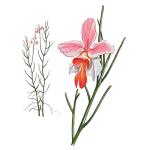 |
|
Vanda tricolor Lindl. |
|
|
Unbranched epiphytic with curved, linear leaves to 18 in (45 cm) long. Flowers in October-January or in May-June. |
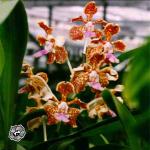 |
User-submitted additions and corrections:
Dr. Fragrance
California
22nd Apr 2006
|
Vanda amesiana and V. kimballiana are both now in the genus Holcoglossum. Both grow outdoors year-round in southern California quite well, handling temperatures down to 38 degrees fahrenheit and lower without the slightest signs of cold damage (but keep them above freezing at all times). Both grow best mounted, and should be protected from nighttime moisture on winter evenings. Vanda amesiana is a bit more fragrant than V. kimballiana, and has an odor very similar to gardenias when in bloom. |
|
These materials are freely provided for instructional and educational purposes. Any duplication or publication of text or images herein for commercial gain without explicit written permission of the owner or photographer constitutes breach of trust and violation of copyright.
Copyright © Galka Okhapkina 1998-2026








